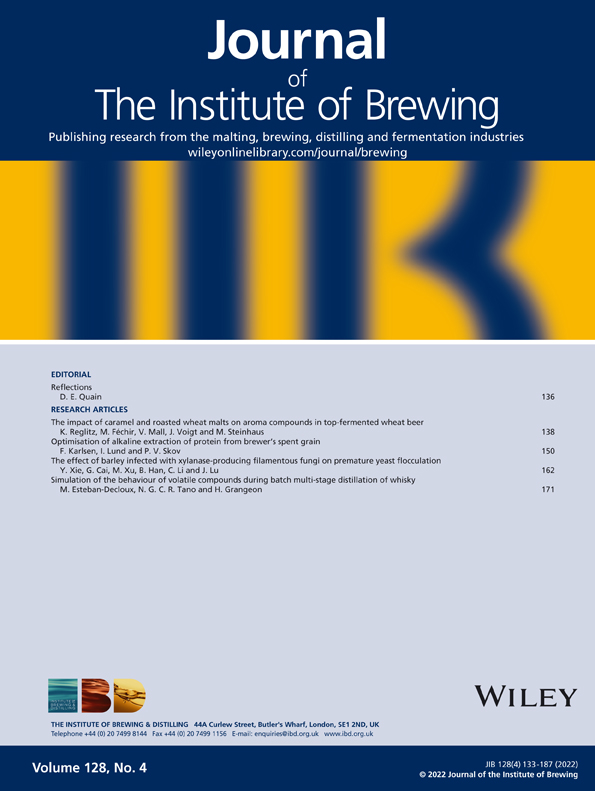VARIETAL IDENTIFICATION OF BARLEY AND MALT*
Presented at the 7th World Cereal and Bread Congress, Prague, 28 June-2 July, 1982.
Abstract
A vertical polyacrylamide — SDS electrophoretic technique, including whole protein extraction and staining steps, was improved with a view to developing it for routine laboratory use with single barley kernels. The pattern consisted of 4 zones: A (albumins-globulins). B and C (hordeins) and D (possibly glutelins) displaying unequal varietal polymorphisms (1, 13, 13 and 4 types respectively). 28% of the barley samples (77 varieties), including most cultivars grown in France, could be unambiguously identified from qualitative differences only, in the B, C and D zones. Adding three other characteristics (hairs and furrow hairiness, peroxidase, zymogram, esterase zymogram), as many as 78% of the varieties could be identified, the other 22% consisting of very closely related barleys. After slight modification of protein extraction conditions, the same methods could be used with malt, based on the same electrophoretic types. A graphic tablet connected to a microcomputer was used for automatic acquisitions of records and comparisons of electrophoretic data.




